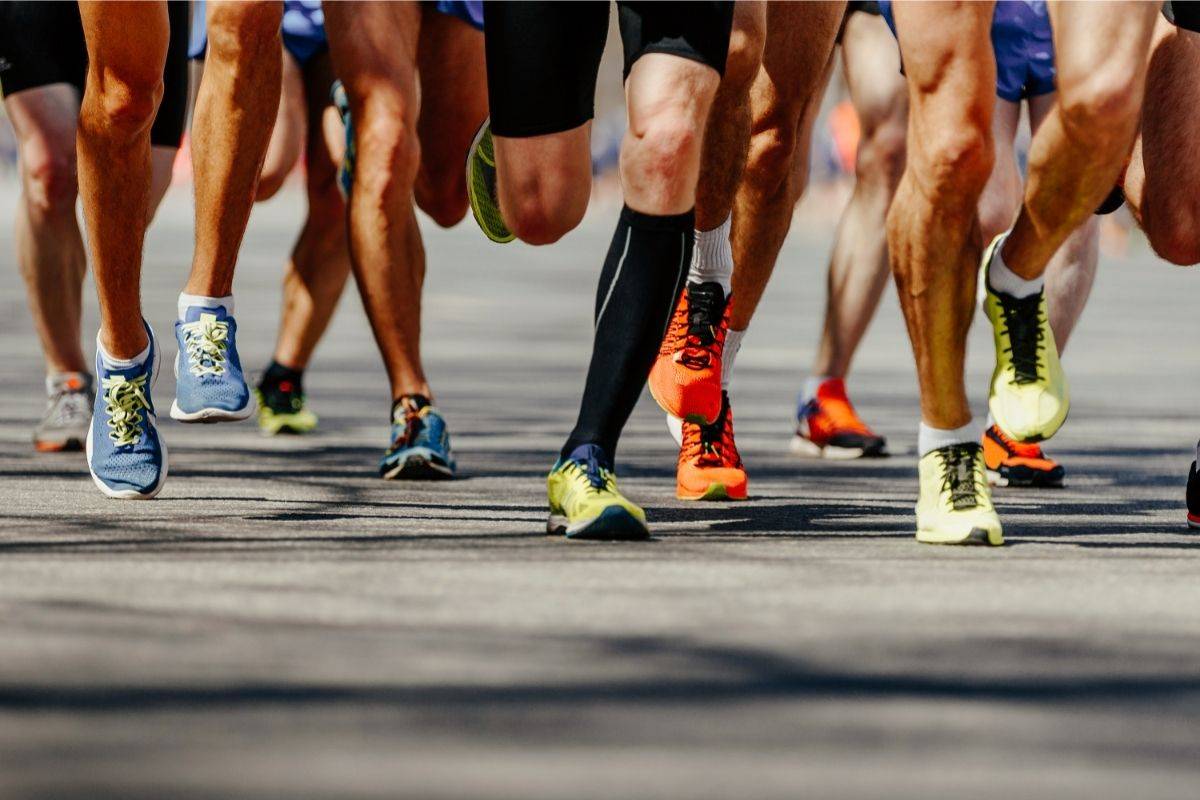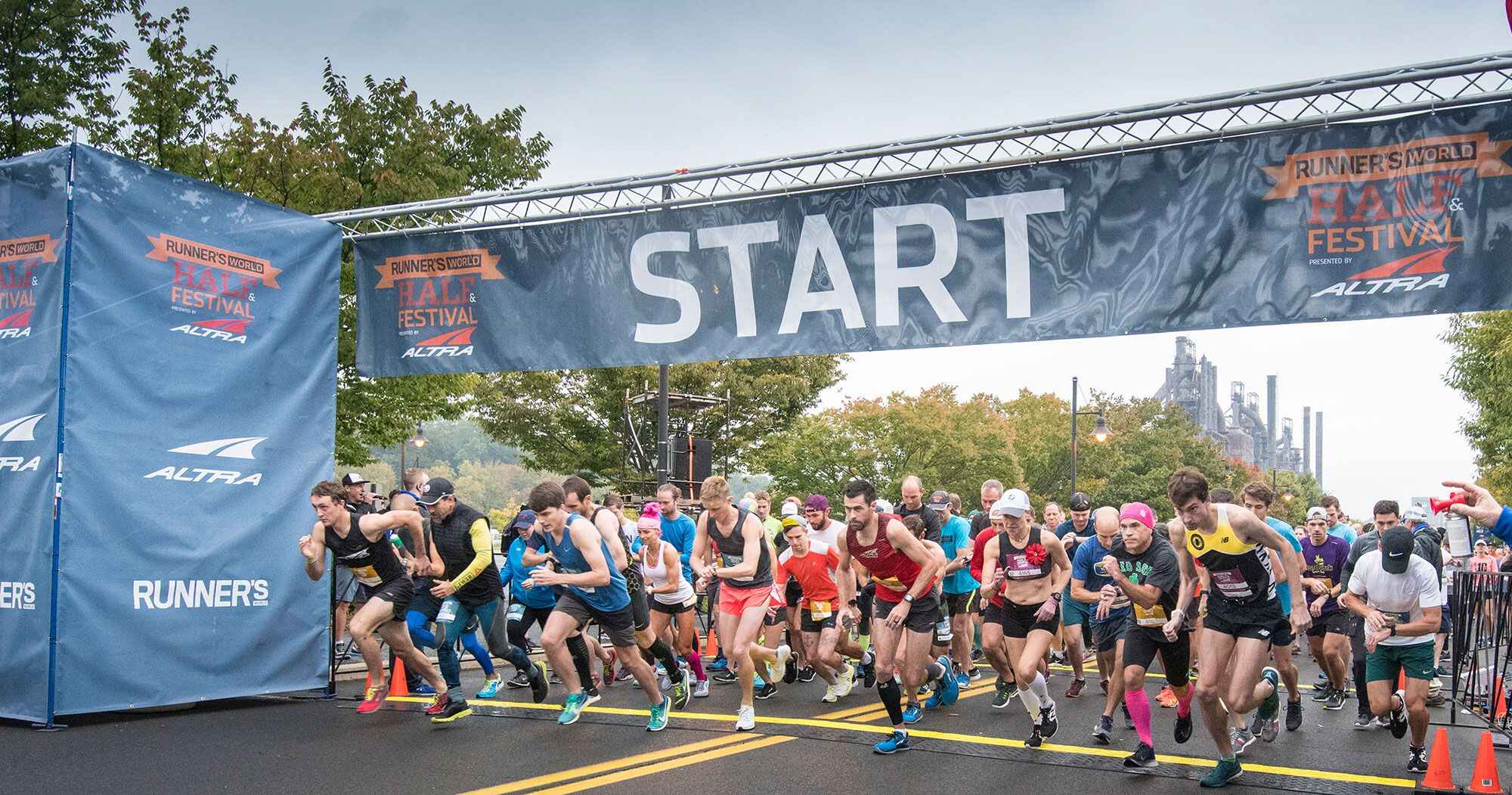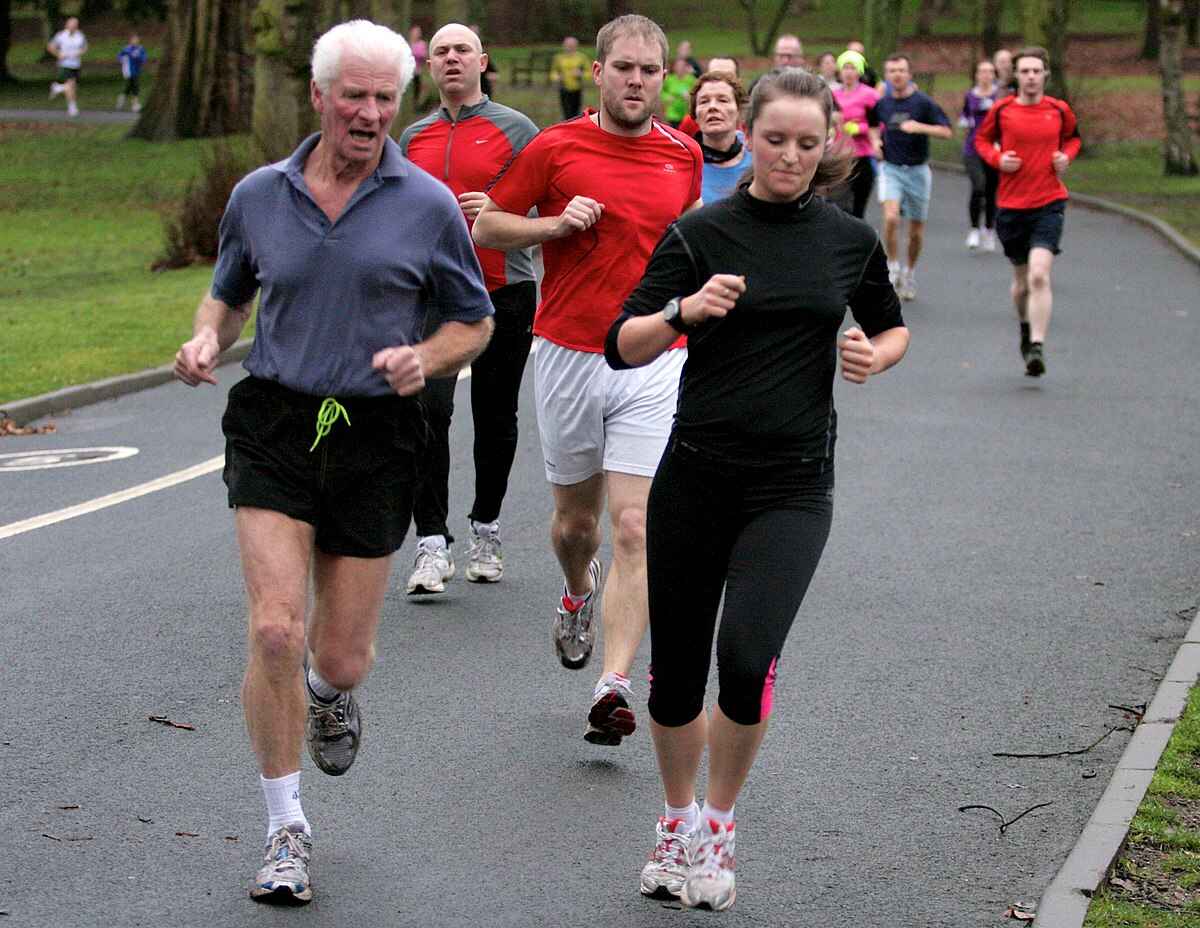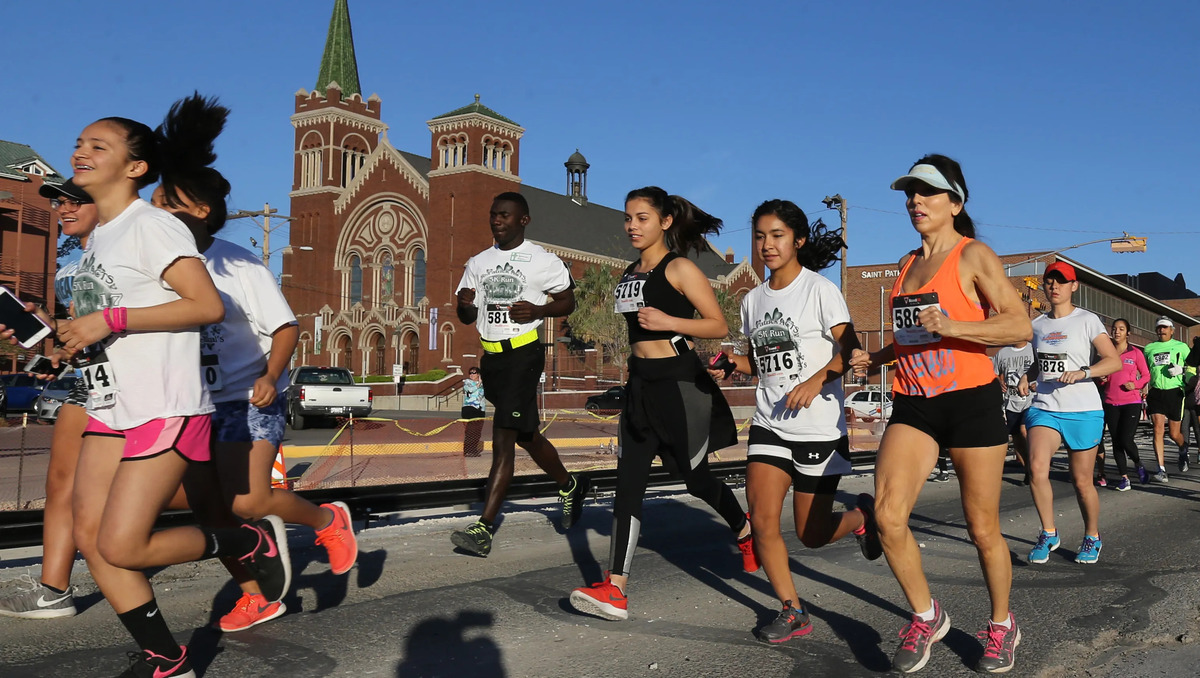

Featured
How Many Miles In A 5K Run
Modified: January 1, 2024
Discover the answer to how many miles are in a 5K run, a popular distance for runners. Dive into this featured topic and get all the information you need.
Introduction
Welcome to the world of running, where the thrill of the race and the joy of crossing the finish line await you. Whether you’re a seasoned runner or just starting out on your running journey, you’ve probably heard of the term “5K” before. It’s a popular race distance that attracts people of all ages and fitness levels. But what exactly is a 5K run and how does it relate to miles?
A 5K run is a race that covers a total distance of 5 kilometers, which is equivalent to approximately 3.1 miles. It’s a great starting point for beginners who want to challenge themselves and gradually build up their endurance. But why 5 kilometers? Well, the 5K distance is widely recognized as a standard race distance because it provides a good balance between challenge and achievable goals for runners of all abilities.
Now, you might be wondering how the 5K distance translates to miles. In the United States, where the imperial system is used, a mile is equivalent to 1.609 kilometers. So, when we convert the 5K distance to miles, we get approximately 3.1 miles. This conversion can be helpful if you prefer to measure your running achievements in miles or if the race you’re training for is specifically measured in miles.
It’s important to note that the conversion from kilometers to miles is not an exact one-to-one ratio. As a result, you may notice slight variations in the distance when converting between the two units of measurement. However, for practical purposes, the approximate conversion of 5 kilometers to 3.1 miles is widely accepted and used in the running community.
When it comes to participating in a 5K run, there are a few factors that can affect the actual distance you cover. To ensure you’re prepared for the race, it’s important to consider the course terrain, elevation changes, and any additional loops or detours that may be present. These factors can contribute to a slightly longer or shorter distance than the standard 5 kilometers.
Now that you have a better understanding of the 5K distance and its relation to miles, let’s explore the factors that can affect the distance of a 5K run in more detail.
Understanding a 5K Run
Before lacing up your running shoes and hitting the pavement, it’s important to understand what a 5K run entails. A 5K run is a race that covers a total distance of 5 kilometers, or approximately 3.1 miles. It is one of the most popular race distances across the globe, attracting both competitive runners and casual enthusiasts.
Typically, a 5K race is held on a course that is marked and measured to ensure accuracy. The course can take place on various types of terrain, including roads, trails, or even on a treadmill in a controlled environment. The race can be organized by running clubs, charity organizations, or as part of larger running events such as marathons.
One of the appealing aspects of a 5K run is its accessibility. It is a distance that can be conquered by people of all fitness levels, from beginners to experienced runners. For those who are new to running, a 5K can serve as an achievable goal to work towards. It provides an opportunity to challenge oneself, improve endurance, and experience the exhilaration of crossing the finish line.
During a 5K run, pacing and strategy play crucial roles in achieving a successful race. Some runners may opt for a steady, consistent pace throughout the entire distance, while others may start slower and gradually increase their speed. It’s important to find a pace that is comfortable for you, maintain proper form, and listen to your body’s cues.
Participating in a 5K run is not just about the physical aspect, but also the mental and emotional aspects. It requires discipline, determination, and mental strength to push through any potential discomfort or fatigue. The sense of accomplishment and fulfillment that comes from completing a 5K can boost self-confidence and fuel a desire to continue pursuing running as a hobby or a competitive sport.
While many people participate in 5K runs for personal reasons, it is also a great opportunity to connect with others who share a love for running. The energetic atmosphere, camaraderie among participants, and support from spectators create a vibrant and uplifting environment.
Whether you are aiming to beat your personal best, raise funds for a charitable cause, or simply enjoy a fun and active day, a 5K run offers a platform to achieve these goals. So, lace up your running shoes, set your sights on the finish line, and embrace the adventure that awaits you in a 5K run!
Conversion of 5K to Miles
Understanding the conversion between kilometers and miles is essential for runners who wish to track their progress or participate in races that are measured in different units. When it comes to the distance of a 5K run, it can be helpful to know the equivalent measurement in miles.
In the United States, where the imperial system is used, a mile is equal to 1.609 kilometers. Therefore, to convert a 5K run to miles, we can divide the distance by the conversion factor. In this case, dividing 5 kilometers by 1.609 gives us approximately 3.1 miles. So, a 5K run is equivalent to approximately 3.1 miles.
It’s important to note that this conversion is an approximation, as the exact conversion factor can vary slightly depending on the rounding method used. However, for practical purposes, the value of 3.1 miles is widely accepted and used across the running community.
Understanding the conversion between kilometers and miles can have practical implications for runners. For example, if you’re training for a race that is measured in miles, knowing that a 5K is equal to 3.1 miles can help you set and monitor your training goals. Additionally, if you prefer to track your runs in miles rather than kilometers, converting a 5K run to miles allows you to easily compare your performance with other runners who use the mile measurement.
It’s worth noting that many running apps and GPS devices provide the option to display distances in either kilometers or miles, allowing runners to choose their preferred unit of measurement. This flexibility ensures that runners can accurately track their progress and stay motivated, regardless of their preferred measurement system.
While the conversion from 5K to miles may seem straightforward, it’s important to remember that the distance covered during a race may vary slightly depending on external factors such as course design and measurement accuracy. Therefore, it’s always a good idea to consult the race organizers or review the race details to confirm the exact distance before relying solely on the conversion calculation.
Having an understanding of the conversion between kilometers and miles is valuable for runners, as it allows for effective tracking, goal-setting, and comparisons. Whether you prefer to measure your runs in kilometers or miles, knowing that a 5K run is approximately 3.1 miles can enhance your running experience and help you achieve your fitness goals.
Factors Affecting the Distance of a 5K Run
While a 5K run is typically defined as a race covering a distance of 5 kilometers, it’s important to understand that the actual distance covered can vary slightly due to certain factors. These factors can impact the total distance of the race and affect the overall experience for runners.
One key factor that can affect the distance of a 5K run is the course terrain. If the race takes place on a hilly or uneven route, runners may find themselves covering a slightly longer distance. This is because the inclines and declines can add extra distance to the race, making it feel more challenging. On the other hand, if the course is completely flat, the distance covered may be shorter than the standard 5 kilometers.
In addition to the terrain, the elevation changes within the course can also impact the distance of a 5K run. If there are significant uphill or downhill sections, this can affect the overall distance covered. Uphill sections may require runners to exert more effort, resulting in a slower pace and potentially covering a greater distance. Conversely, downhill sections may allow runners to maintain a faster pace, potentially covering a shorter distance.
Furthermore, the design of the course itself can influence the distance of a 5K run. Some race organizers may incorporate loops or detours within the course, which can add or subtract distance. For example, if a race includes multiple loops in a park, runners may cover slightly more or less than the standard 5 kilometers depending on the total number of loops completed.
While the factors mentioned above can impact the distance of a 5K run, it’s important to note that race organizers strive to ensure accurate measurements. They use advanced technology and follow established guidelines to design and measure courses, minimizing any potential discrepancies in distance. However, it’s always a good idea for runners to familiarize themselves with the race details and consult the race organizers to confirm the exact distance before the event.
Despite these potential variations, it’s important to remember that the distance of a 5K run is just a benchmark. The value of participating in a 5K run extends far beyond the exact distance covered. It’s an opportunity for individuals to challenge themselves, improve their fitness, and experience the exhilaration of completing a race.
Ultimately, whether a 5K run measures slightly longer or shorter than the standard distance, what matters most is the personal achievement and the positive impact it has on the mental and physical well-being of the participants. So, embrace the challenge, enjoy the journey, and celebrate your accomplishment in a 5K run, regardless of the exact distance covered.
Training for a 5K Run
Preparing for a 5K run requires a well-structured training program that gradually builds your endurance, strengthens your muscles, and improves your speed. Whether you’re a beginner or an experienced runner, following a training plan can help you achieve your goals and ensure a successful race day.
When starting your 5K training, it’s important to assess your current fitness level and set realistic goals. This will help you choose a training plan that suits your needs and abilities. If you’re new to running, consider starting with a run/walk method where you alternate between running and walking intervals. As your fitness improves, gradually increase the time spent running and reduce the walking intervals.
Consistency is key when it comes to training for a 5K run. Aim to train at least three to four times a week to build up your endurance and adapt to the demands of running. Each training session should include a mix of running, cross-training, and rest days to prevent overuse injuries and allow for proper recovery.
Incorporating a variety of workouts into your training plan can help improve your overall fitness and prevent boredom. In addition to the regular running sessions, include cross-training activities such as cycling, swimming, or strength training to strengthen different muscle groups and enhance your overall athletic performance.
As you progress through your training plan, gradually increase the duration and intensity of your runs. This can include longer continuous runs, interval training to improve speed, and hill workouts to build strength. Be sure to listen to your body and adjust the intensity and duration of your runs as needed to avoid injury.
It’s important to include rest days in your training plan to allow your body to recover and adapt to the demands of running. Rest days help prevent overtraining and reduce the risk of injury. Use these days to focus on active recovery, such as stretching, foam rolling, or engaging in low-impact activities like yoga or walking.
Additionally, don’t forget to pay attention to your nutrition and hydration. Fueling your body with balanced meals, incorporating carbohydrates for energy, and staying hydrated before, during, and after your runs will support your training efforts and keep you performing at your best.
Finally, having a positive mindset and staying motivated throughout your training is essential. Joining a running group or finding a training buddy can provide accountability and encouragement. Celebrate milestones along the way, such as completing a longer run or reaching a new personal best. Visualize yourself crossing the finish line on race day to stay motivated and focused.
Remember, everyone’s journey is different, so listen to your body, respect your limits, and enjoy the process of training for a 5K run. With dedication, perseverance, and a solid training plan, you’ll be well-prepared to tackle the challenge and cross the finish line with a sense of accomplishment.
Benefits of Running a 5K
Participating in a 5K run goes beyond the physical challenge of completing the distance. It offers a wide range of benefits that can positively impact your overall well-being. Whether you’re a seasoned runner or just starting out, here are some of the benefits you can experience from running a 5K:
Improved cardiovascular health: Running a 5K regularly can strengthen your heart, improve circulation, and enhance your cardiovascular fitness. It helps lower blood pressure, reduce the risk of heart disease, and improve overall heart health.
Weight management: Running is known to be an effective calorie-burning exercise. By training for and running a 5K, you can help manage your weight or even lose excess pounds. Running engages multiple muscles and increases your metabolism, ultimately contributing to weight loss and a leaner physique.
Stronger muscles and bones: Running is a weight-bearing exercise that puts stress on your bones, helping to strengthen them. It also engages various muscle groups, including your legs, core, and upper body, leading to increased muscle strength and endurance.
Mental well-being: Engaging in regular exercise like running releases endorphins, a hormone known for its mood-lifting properties. Running a 5K can help reduce stress, anxiety, and symptoms of depression, while improving overall mental health and promoting a sense of well-being.
Increased energy and stamina: As you train for a 5K run, your body adapts and becomes more efficient at utilizing oxygen, which in turn increases your energy levels and stamina. The improved cardiovascular fitness and endurance acquired through running can enhance your performance in daily activities and even in other sports or physical activities.
Social connections: Participating in a 5K run offers a great opportunity to connect with like-minded individuals who share a passion for running. You can potentially join running groups, make new friends, and establish a support system that motivates and encourages you to continue running and stay active.
Sense of accomplishment: Crossing the finish line of a 5K run is an achievement that boosts self-confidence and instills a sense of accomplishment. Setting a goal, working hard to achieve it, and experiencing the joy of completing a race can have a positive impact on self-esteem and self-belief.
Overall fitness: Running a 5K engages your entire body and contributes to overall fitness. It can help improve flexibility, coordination, and balance. It also strengthens your immune system, reducing the risk of chronic diseases such as diabetes, certain cancers, and obesity-related conditions.
These are just a few of the many benefits you can experience from running a 5K. By incorporating running into your lifestyle, you can enhance your physical and mental well-being, while enjoying the thrill of participating in a race and achieving personal milestones.
Conclusion
Participating in a 5K run can be a rewarding and fulfilling experience for runners of all abilities. Whether you’re a beginner looking to challenge yourself or a seasoned runner aiming for a new personal best, the 5K distance offers a perfect balance between challenge and achievable goals.
From understanding the conversion of 5K to miles to exploring the factors that can affect the distance of a 5K run, it’s important to have a comprehensive understanding of what a 5K entails. This knowledge allows you to set realistic goals, track your progress, and make informed decisions when training for and participating in a 5K run.
Training for a 5K run requires dedication, consistency, and a well-structured plan. By gradually building your endurance, incorporating cross-training activities, and prioritizing rest and recovery, you can maximize your chances of a successful race day.
Running a 5K offers numerous benefits for both your physical and mental well-being. From improved cardiovascular health and weight management to increased energy and stamina, running can positively impact your overall fitness and contribute to a healthier lifestyle. Additionally, the sense of accomplishment, social connections, and mental well-being derived from participating in a 5K run add to the overall joy and satisfaction of the experience.
So, whether you’re a beginner or an experienced runner, lace up your shoes, embrace the challenge and excitement, and embark on your 5K journey. With the right mindset, training, and determination, you’ll cross that finish line with a sense of accomplishment, a boost in self-confidence, and a new love for the sport of running.
Remember, a 5K run is not just about the distance. It’s about the personal growth, the friendships formed, and the memories made along the way. So, set your goals, commit to your training, and embrace the journey to experience the countless rewards that come with running a 5K.









